Polyhedra
"God is always doing geometry"
Plato
A Polyhedron (plural
"polyhedra") is a finite region of 3-D Euclidean space* bound by at least 4 polygons - its
"faces" - and
at least 6 edges and 4 vertices. These surface elements are, together with the inner
volume, also part of the polyhedron.
- Just as its edges link two vertices, faces meet in pairs at the edges, which are
their sides.
- Just as each polygonal face is bond by an equal number of edges and vertices (at least
3 each), edges and faces meet in equal numbers (and at least 3 each) at each vertex P, in
a way specified by a single polygon, the "vertex figure": its number of sides
represents how many faces we have to go through to complete a circuit around each vertex.
The lengths of those sides are the chords of
the inner angles of the polygons that meet at P.
In this page, I mostly present paper models of polyhedra I have made over the years. The
advantage of paper models is that they can display face arrangements, which allows one to
distinguish between several regular polyhedra. For instructions on how to make most models
in this page, including paper versions of the models in Figs. 3a, b and c, I recommend
Cundy & Rollet (1981, see references). For the
ditrigonal polyhedra in Fig. 3.7, see instructions in Wenninger (1974,2003). In these
models, I use a consistent colouring of the faces: The Triangles are yellow, Squares
are red, Pentagons are green and Pentagrams are gold. The non-regular polygonal faces are
blue.
* This is a traditional definition that excludes tesselations, which are infinite
divisions of a 2-D Euclidean space - I don't have space in my office for infinite objects.
Regular and quasi-regular convex polyhedra
In a regular polyhedron, all faces and vertex figures are regular. From this, it follows
that it is isohedral: the faces are not only
identical, but the polyhedron looks the same seen from all of them; this implies, for
instance, that the polyhedron has a well defined centre and that all faces are equidistant
from it. The same is true for the other types of elements, i.e., the polyhedron is also
isogonal and isotoxal.
This has a strong implication for all elements. Let's start with a face with k sides. This
connects to k other faces. However, since the polyhedron is isohedral, it still looks the
same from the point of view of its k neighbouring faces. This means that the polyhedron
has an axis of k-fold symmetry going through the original face, i.e., it can rotate by
360/k degrees and stay identical. The same applies, by definition, to all faces. A similar
reasoning applies to the other types of elements, each of them associated with another
dihedral symmetry of the polyhedron. In particular, the edges are always associated with
2-fold symmetry: since the 2 vertices connected by the edges are identical, and the 2
faces separated by an edge are also identical, the whole polyhedron remains unchanged
under 180 degree rotations and reflections around the edge midpoints. In most cases, this
overal symmetry also includes a central symmetry of the polyhedron, except where stated
below.
Regarding their names, we extend the polygonal naming convention to the regular polyhedra:
For the regular tetrahedron, we will use simply the capitalised word Tetrahedron, and
likewise for Octahedron, Icosahedron, Dodecahedron, etc. The only name that does not
mention the number of faces is the Cube; this is also similar to the Polygon names, where
the word Square denotes regularity by default.
The first models I built represented the five "Platonic solids", the convex regular polyhedra.
They have been known at least since the time of the Pythagoreans.
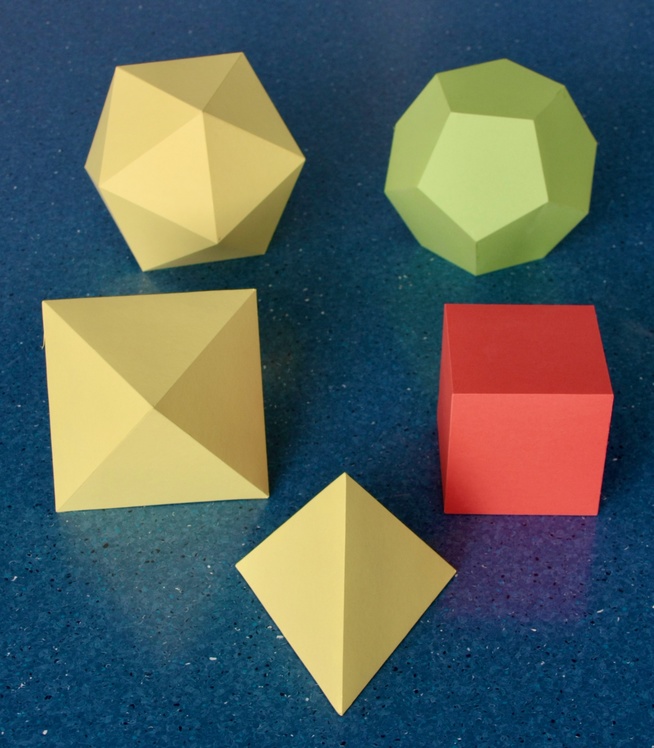
Fig. 3.1: The five Platonic solids.
In the foreground is the Tetrahedron.
In the middle row
on the left is the Octahedron, to its right is the Cube.
In the background,
on the left, is the Icosahedron, and on the right
is the Dodecahedron.
The Tetrahedron has 4
Triangular faces, 4 vertices where 3 edges and 3 faces meet, i.e., with Triangular vertex
figures, and 6 edges; it is an equilateral triangular pyramid. This is the smallest number
of elements that any polyhedron can have, making this an analogue of the Triangle in 2
dimensions.
The Octahedron has 8
Triangular faces, 6 vertices where 4 edges and 4 faces meet, i.e., with Square vertex
figures, and 12 edges. One can think of it as two equilateral Square pyramids glued together at
their Square bases. The Cube
is the most familiar shape of all; it has 6 Square faces, 8 vertices with Triangular
vertex figures and 12 edges.
The Icosahedron has 20 Triangular
faces, 12 vertices with Pentagonal vertex figures and 30 edges. The Dodecahedron has 12
Pentagonal faces, 20 vertices with Triangular vertex figures and 30 edges.

Fig. 3.2: Here are the platonic polyhedra again, this time as dice. Picture by Aris Noutsos.
One interesting feature of the Platonic solids with Triangular faces is that their vertex
figures are inevitably highlighted by their edges. In the case of the Tetrahedron, each
vertex has a Triangular figure highlighted as the sides of its opposite face. In the case
of the Octahedron, the vertex figure is a Square, which appears as an ``equatorial''
polygon halfway between two opposite vertices, there are therefore three of them in three
orthogonal planes. In the case of the Icosahedron, the vertex figure is a Pentagon, one
appears around (and under) each of the 12 vertices of the Icosahedron. Each edge and
vertex of the Icosahedron is shared by two and five such Pentagons respectively.
If the faces have central symmetry, then opposite
edges are parallel. The same will happen to adjacent faces. Thus, in these polyhedra there
are equatorial ``rings'' of faces. The only face of a Platonic solid with central symmetry
is the Square, and indeed in the Cube we can see three equatorial rings of Squares in
perpendicular planes.
***
With the Platonic solids, we can build several interesting compounds, represented in these
cases by edge models built with the Zometool. Three of them are presented below, the compound of a
Tetrahedron with its dual in Fig. 3.3a, the compound of an
Octahedron and a Cube in Fig. 3.3b, and the compound of
a Dodecahedron and an Icosahedron in Fig. 3.3c.
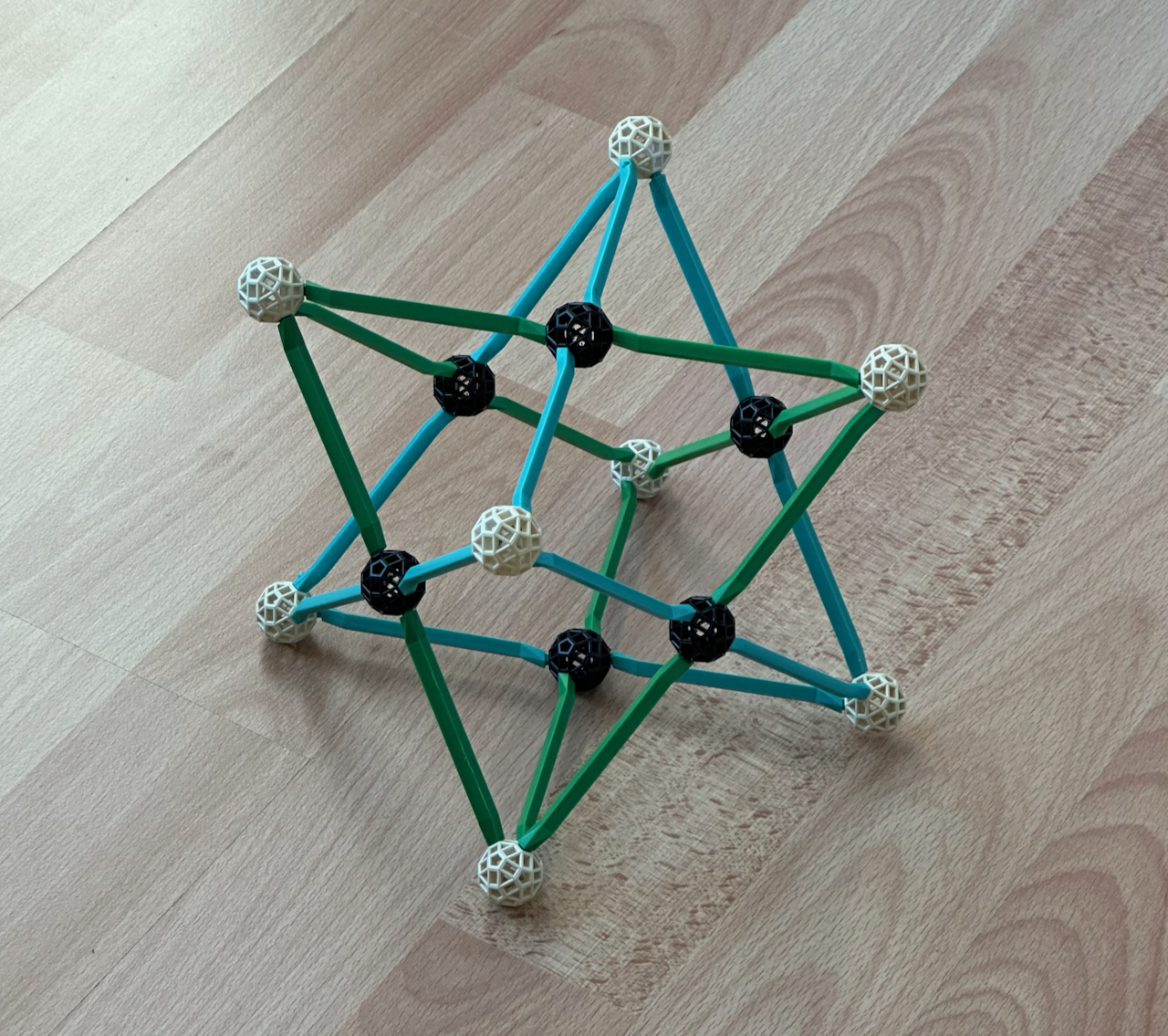
Fig. 3.3a: The compound of a Tetrahedron (HG2 edges in green) with a dual Tetrahedron
(HG2 edges in teal).
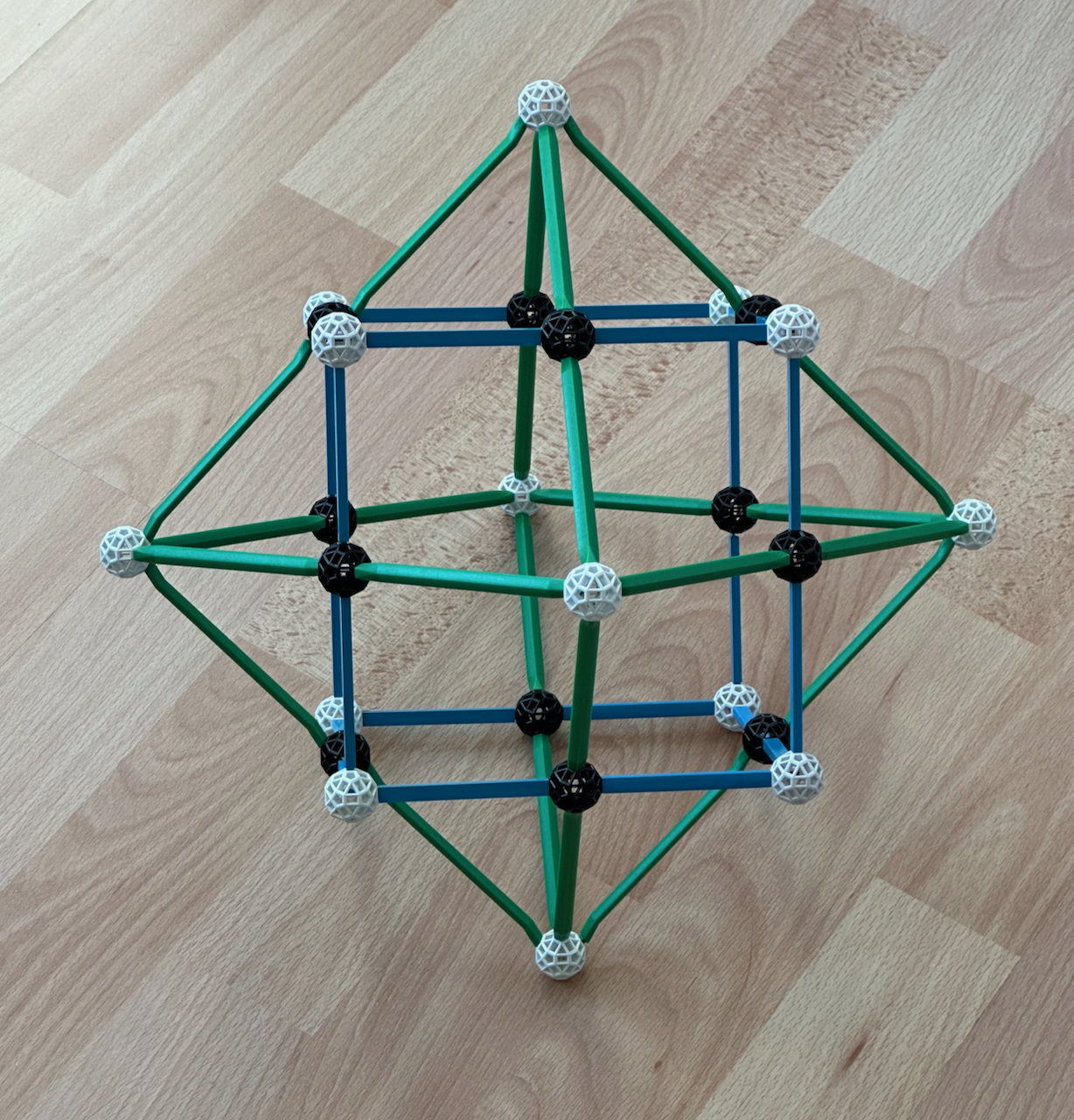
Fig. 3.3b: The compound of a Octahedron (G1 edges in green) and a Cube (B1 edges in blue).
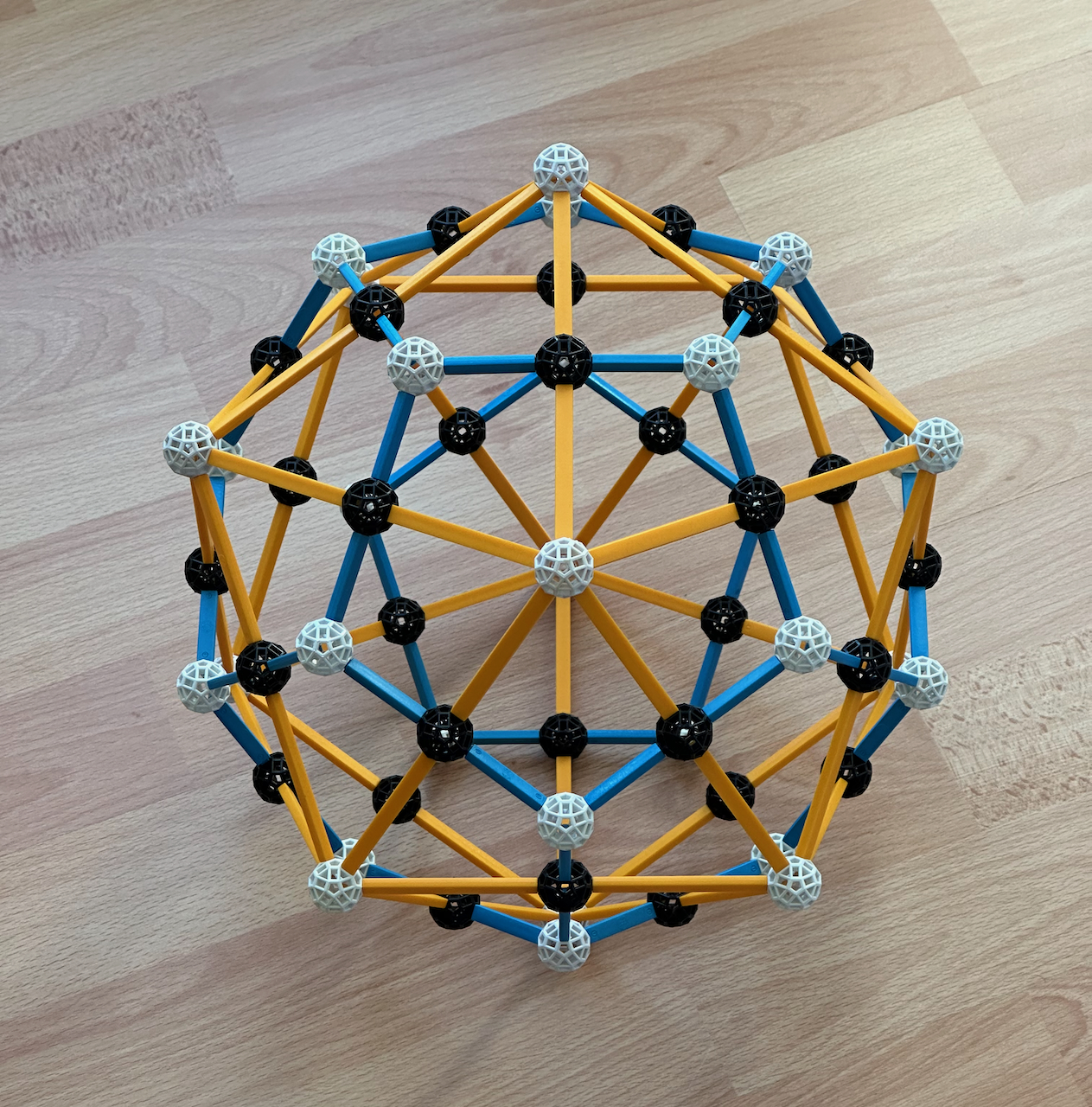
Fig. 3.3c: The compound of a Icosahedron (B1 edges in yellow) and a Dodecahedron (B0 edges
in blue).
These compounds illustrate three important aspects. The first is that they provide a good
illustration of the directions of the radial axes of symmetry of the models:
- The Tetrahedron has tetrahedral symmetry. This
has 4 axes of 3-fold symmetry (which go through a vertex and the opposite face) and three
axes of 2-fold symmetry, which go through the midpoints of its 6 edges, here in black.
However, these axes of symmetry do not include central symmetry. When we include a second
Tetrahedron, as in Fig. 3.3a, we add central symmetry and obtain the Octahedral symmetry: all 4
axes of 3-fold symmetry gain central symmetry (they go through two opposite vertices, in
white, and faces), and the 3 axes of 2-fold symmetry (in black) go through two opposite
pairs of perpendicular edges, becoming axes of 4-fold symmetry.
- As its name indicates, the Octahedral symmetry is that of the Octahedron, which is
also possessed by the Cube. As we can easily see from Fig. 3.3b, the 3 axes of 4-fold
symmetry go through the 6 vertices of the Octahedron and faces of the Cube, and the 4
axes of 3-fold symmetry go through the 8 faces of the Octahedron and vertices of the Cube.
Relative to the Tetrahedral symmetry, the Octahedral symmetry has 6 new axes of 2-fold
symmetry that go through the midpoints of the 12 edges of both polyhedra, here in
black.
- In Fig. 3.3c, we see that the Icosahedron and the Dodecahedron have the same type of
symmetry, the Icosahedral symmetry: this
has 6 axes of 5-fold symmetry (which go through the 12 vertices of the Icosahedron and
faces of the Cube), 10 axes of 3-fold symmetry (which go through the 20 faces of the
Icosahedron and vertices of the Dodecahedron) and 15 axes of 2-fold symmetry, which go
through the midpoints of the 30 edges of both polyhedra (here in black).
As mentioned above, the axes of 2-fold symmetry pass through the midpoints of the edges.
In these models, these special axes are indicated clearly by the black balls, the other
axes of symmetry are indicated by the white balls.
***
The second aspect that is well illustrated by the models above is the concept of duality, which we now
extend to polyhedra.
If polyhedra A and B are dual, then to a vertex of A corresponds a face of B that is the
dual polygon of the vertex figure of A, that face of B is in a plane perpendicular to the
line from the vertex of A to its centre. Likewise, to a face of A corresponds a vertex of
B, with a vertex figure that is the dual of the face of A. The number of edges of A and B
are the same, and each edge of A intersects and edge of B at 90 degrees. If A and B are
regular, their edges intersect in their midpoints. As highlighted above, these edge
midpoints are located along the axes of 2-fold symmetry of A and B. All of this implies
that two dual polyhedra must share the same symmetry.
As we can see from Fig. 3.3b, the Octahedron and the Cube are duals. In Fig. 3.3c, we can
see that the Dodecahedron and Icosahedron are also duals. The dual of the Tetrahedron is
another Tetrahedron in a different position (Fig. 3.3a), i.e., the Tetrahedron belongs to
a special class of polyhedra that are self-dual. We can also see that the
equatorial Square of the Octahedron is the dual of the equatorial ring of Squares of the
Cube - the four vertices of the former correspond to the four faces of the latter. Thus,
if regular polyhedron A has faces with central symmetry (and thus has an equatorial ring
of faces) its dual polyhedron B will have a vertex figure with central symmetry (and an
equatorial Polygon).
Fig. 3.3a illustrates an important fact: by omitting alternating vertices of the Cube, we
obtain the vertices of a Tetrahedron. This makes the Tetrahedron the 3-dimensional
representative of an infinite family of polytopes built by deleting alternating vertices
of Hypercubes, the Demi-hypercubes, which have their
unique demi-hypercubic symmetry.
***
A third aspect depicted by Figs. 3.3a, b and c is the concept of rectification extended
to polyhedra. In Fig. 3.4, we see models of the convex polyhedra derived from the
(non-convex) polyhedron compounds in Figs. 3.3b and c: the intersections of their
polyhedra and their convex hulls.
The Cuboctahedron is
the intersection of the two polyhedra in Fig. 3.3b. Its vertices are the black balls of
that model. Given the way it is built, it has the 6 Square faces of the Cube, the 8
Triangular faces of the Octahedron, 12 identical vertices and 24 identical edges. From the
chords of the inner angles of Triangles and Squares, we find that the vertex figure is the
Yellow rectangle (Fig. 2.2b).
The Rhombic
dodecahedron is the convex hull of the two solids of the compound in Fig. 3.3b; its
vertices are the full set of white balls of that compound. It has 12 identical Yellow
rhombic faces (Fig. 2.4a), the 6 vertices of the Octahedron (with Square vertex figures),
the 8 vertices of the Cube (with Triangular vertex figures) and 24 identical edges. These
polyhedra share the Octahedral symmetry of the
compound from which they were derived.
The Icosidodecahedron is the
intersection of the two polyhedra in Fig. 3.3c, its vertices are the black balls of that
model. It has the 20 Triangular faces of the Icosahedron, the 12 Pentagonal faces of the
Dodecahedron, 30 identical vertices and 60 identical edges. From the chords of the inner
angles of the Triangles and Pentagons, we find that its vertex figure is the Golden
rectangle (Figs. 2.2d).
The Rhombic
triacontahedron is the convex hull of the compound in Fig. 3.3b. Its vertices are the
full set of white balls in that model. Its has 30 Golden rhombic (Fig. 2.4b) faces, the 12
vertices of the Icosahedron (with Pentagonal vertex figures), the 20 vertices of the
Dodecahedron (with Triangular vertex figures) and 60 identical edges. These polyhedra
share the Icosahedral symmetry of the
compound from which they were derived.
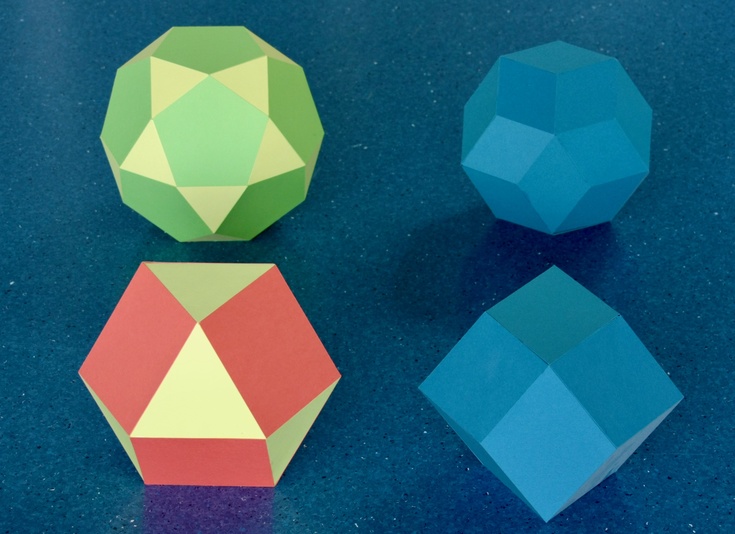
Fig. 3.4: The convex quasi-regular polyhedra and the rhombic
polyhedra.
Bottom left: the Cuboctahedron. To its right is the
Rhombic
dodecahedron.
Top left: the Icosidodecahedron. To its right
is the Rhombic
triacontahedron.
The rectification consists of marking the mid-points of the edges of a polyhedron (for
instance, the black balls in Figs. 3.3a, b and c) and cutting off the vertices at those
points. The resulting rectifications of two dual regular polyhedra, A and B (Rect(A) and
Rect(B)) have the following properties:
- Faces: Rect(A) has two types of faces. 1) The polygonal faces of A are replaced
in rect(A) by their rectifications, which as we've seen in our study of polygons are dual
faces; 2) Under the vertices of A, rect(A) has a new face, identical to the vertex figure
of A.
- The vertex figures of A are the duals of faces of B, so Rect(A) has the faces of
both A and B in dual orientations. The same applies then to Rect(B).
- Vertices: The vertices of Rect(A) and Rect(B) are the mid-points of the edges
of A and of B, which are located in the axes of 2-fold symmetry of A and B. This means
that 1) all vertices of Rect(A) and Rect(B) are identical, i.e., they are isogonal, and 2)
the two vertices in the same axis of symmetry are opposite to each other. Each vertex is
touched by four edges and four faces, two faces of each type and alternating. Thus, the
vertex figure is a rectangle (which has 2-fold symmetry) with one of its axes of symmetry
aligned with the edges of A and B.
- The identical faces and vertices of Rect(A) and Rect(B) imply they are
identical. However, this is not true for dimensions higher than 3.
- Edges: The number of edges of rect(A)/Rect(B) is twice the number of edges of A
and B. The reason for this can be seen in the models above: the black balls divide each
edge of A and B into two segments. The number of edges of the rectification (linking the
black balls) is the same as the number of the edge segments of A or B. All edges are
identical and separate the two types of faces, i.e., rect(A) is isotoxal.
The rectification of the Octahedron and Cube is the Cuboctahedron in Fig. 3.4, the
rectification of the Icosahedron and Dodecahedron is the Icosidodecahedron in Fig. 3.4.
Importantly, if we rectify a Tetrahedron, the polyhedron we obtain has only one type of
face (Triangles), and the Rectangular vertex figure has identical sides, becoming a
Square. The regular faces and vertex figures means it is regular: the Octahedron. The
consequences of this will appear repeatedly in this and the pages that follow. Because
they are isogonal and isotoxal, the Cuboctahedron and Icosidodecahedron are called
"quasi-regular".
From this, it might seem that a rectification is the same as the intersection of two dual
polyhedra whose edges intersect. That is the case for the rectifications of regular
polyhedra, however, in general, the intersections of the edges of two dual polyhedra are
not in their midpoints.
One of the characteristics of these rectifications is that they have equatorial polygons,
a consequence of the central symmetry of their Rectangular vertex figures. Also, as we've
seen, their vertices appear in opposite pairs along the 2-fold symmetry axes of the
polyhedra. This means that the number of vertices (and therefore the number of sides) of
the equatorial polygons must be even. The equatorial polygons are three Squares in
the case of the Octahedron, which are perpendicular to the 3 axes of 4-fold
Octahedral symmetry, four Hexagons in the case of the Cuboctahedron, which are
perpendicular to the 4 axes of 3-fold Octahedral symmetry, and six Decagons
in the case of the Icosidodecahedron, which are perpendicular to the 6 axes of 5-fold
Icosahedral symmetry.
Their equatorial location implies that we can use their metric properties (in Table 1) to
calculate the metric properties of their polyhedra (like the distance of a vertex and an
edge to the centre, R0 and R1 as a function of the edge length
ℓ). Thus, like the Hexagon, the Cuboctahedron is radially equilateral. For the
Octahedron and Icosidodecahedron, R0 = √2 /2 ℓ and φ ℓ
respectively. As we'll see, these equatorial polygons can also be used to study vertex
arrangements. They can also be used with some of the previous faces to make new
uniform polyhedra, the Hemipolyhedra.
***
Now, each rhombic face of a rhombic polyhedron in Fig. 3.4, defined in Figs. 3.3b and c by
the white balls, is centred on a black ball (a vertex of a quasi-regular polyhedron).
Equally, we see in those Figures that each face of a quasi-regular polyhedron (defined by
the black balls) is centred on a white ball. This means, as you might have guessed
already, that the quasi-regular and rhombic polyhedra are duals.
Being the duals of the quasi-regular polyhedra, the rhombic polyhedra in Fig. 3.4 must
have the following properties:
- Faces: They are isohedral, however, their faces are not regular, but the rhombic duals of the rectangular
vertex figures of the quasi-regular polyhedra. Like the latter, these rhombuses have
central symmetry and are associated with the axes of 2-fold symmetry.
- Vertices: They are not isogonal: there are two types of vertex figures,
corresponding to the two different types of faces of their duals.
- Edges: They are isotoxal, with each edge (same number as the dual, and crossing
the edges of the dual at 90 degrees) linking the two kinds of vertices.
Since the quasi-regular polyhedra have equatorial polygons with an even number of sides,
the rhombic polyhedra have equatorial rings with an even number of Rhombic faces, with
sets of parallel edges (perpendicular to the edges of the dual equatorial polygon)
defining each ring. These rings are inevitable given the central symmetry of the faces.
Polyhedra possessing this property are known as Zonohedra, they include the Cube.
One way of making a Rhombic dodecahedron is by dividing a Cube into six (non-equilateral)
Square pyramids, and attach them by their Square bases to the faces of a second Cube. This
operation can be seen as the dual of making a Cuboctahedron by rectification of the
Octahedron. This will be important later for understanding the 24-cell, and why
4-dimensional space has so many regular polytopes.
This also has an immediate consequence: if, in a filling of 3-D space with Cubes (the Cubic honeycomb) we
divide the cubes in two sets in such a way that the Cubes in each set only touch each
other at their vertices (i.e., divide the set into two alternate sets of Cubes).
Then we divide all Cubes in set 1 into 6 Square pyramids and attach those pyramids to the
neighbouring Cubes of set 2. Doing this we fill the full 3-D space with Rhombic
dodecahedra: this is the Rhombic dodecahedron
honeycomb.
We could in principle apply other types of truncation operation to the Platonic solids to
generate other polyhedra. There are 13 isogonal, non-prismatic convex polyhedra where the
faces, though not identical, are all Polygons: these are known as the Archimedean solids. Apart from the Cuboctahedron and
Icosidodecahedron, none of the other Archimedean solids is isotoxal.
Star polyhedra
If we relax the condition of convexity, then there are four additional regular polyhedra,
known as the Kepler-Poinsot polyhedra,
or more simply the regular "star" polyhedra. These admit non-convex star polygons as faces or vertex figures, however, only
Pentagrams actually occur. The regular polyhedra with Pentagrammic faces were described in
detail by Johannes
Kepler. Their duals, with Pentagrammic vertex figures, were found about 200 years
later by Louis
Poinsot. All of them have Icosahedral symmetry; this means that all elements with
Pentagonal symmetry are aligned with the 6 axes of 5-fold symmetry, the elements with
Triangular symmetry are aligned with the 10 axes of 3-fold symmetry, and the 30 edges are
aligned with the 15 axes of 2-fold symmetry.
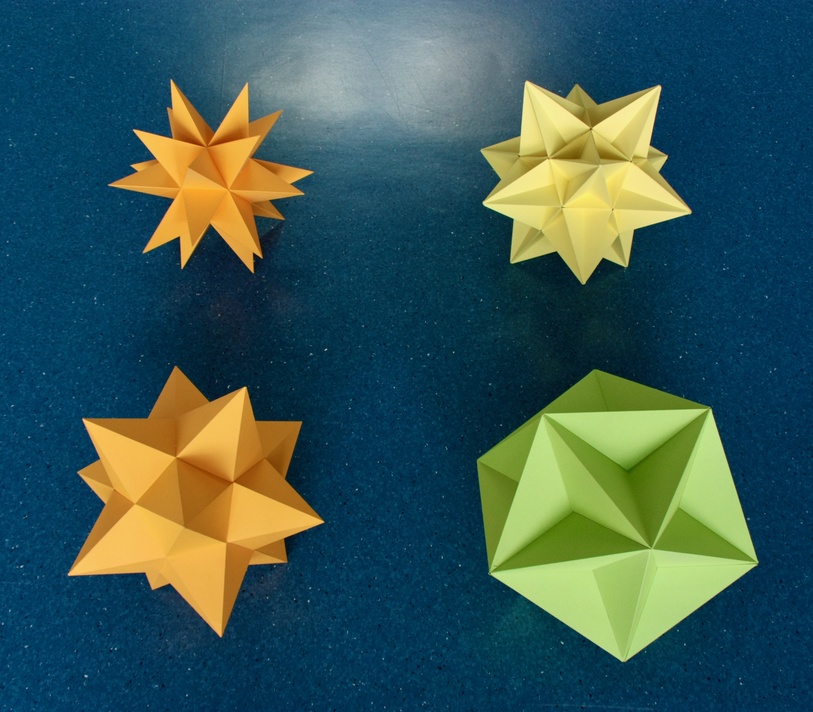
Fig. 3.5a: The four regular "star" polyhedra. Note how the central parts of their faces are
hidden inside the models.
Bottom left: the Stellated
dodecahedron. Bottom right: the Great dodecahedron
Top left: The Great stellated
dodecahedron. Top right: the Great icosahedron.
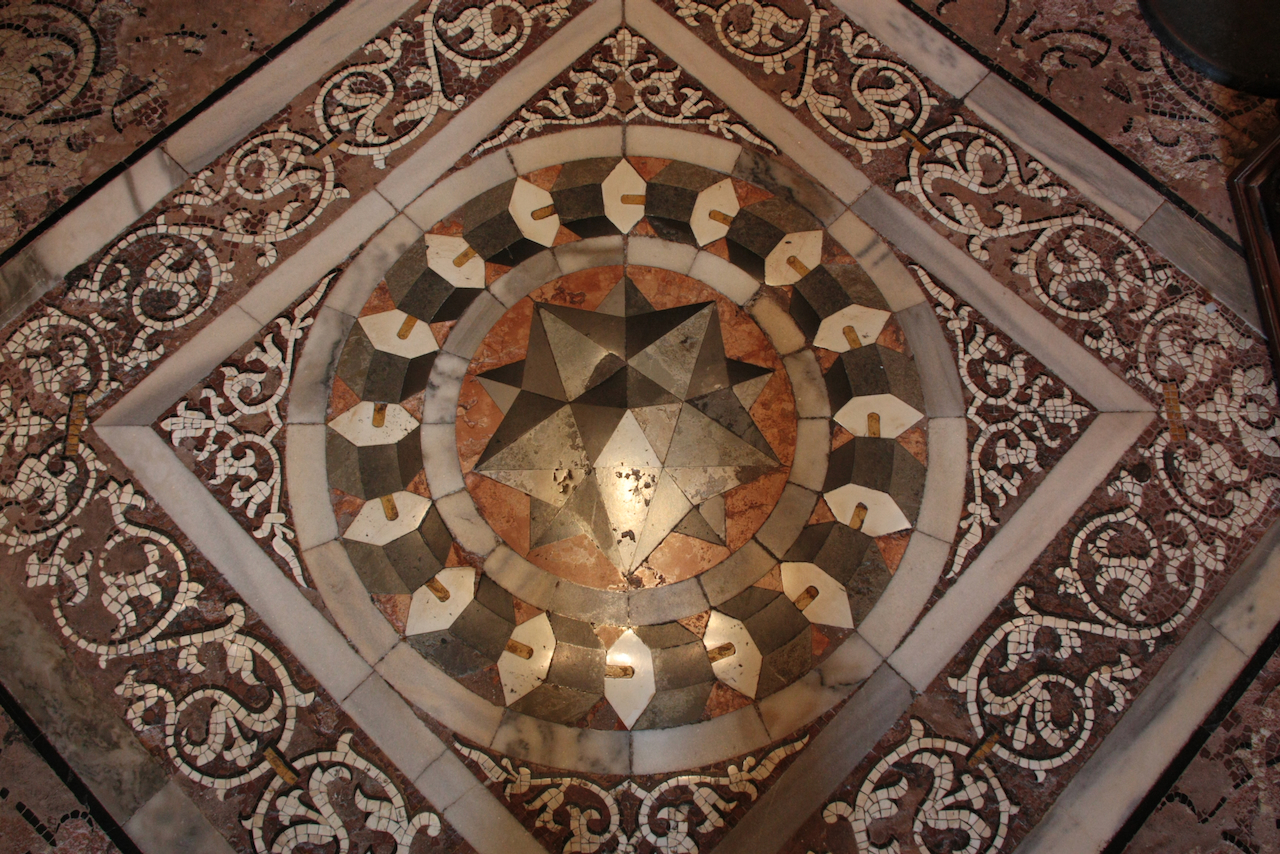
Fig. 3.5b: The earliest (1430) known representation of a Stellated dodecahedron, in the
floor of St. Mark's Basilica in Venice, by Paolo Ucello. I took this picture
in June 2022.
The Small
stellated dodecahedron (henceforth "Stellated dodecahedron" for short, see 3-D model here) has 12
Pentagrammic faces and 12 vertices with Pentagonal vertex figures. Its dual, the Great dodecahedron
(see 3-D model here), has
12 Pentagonal faces and 12 vertices with Pentagrammic vertex figures.
The Great
stellated dodecahedron (3-D model here) has 12 Pentagrammic faces
and 20 vertices with Triangular vertex figures. Its dual, the Great icosahedron (3-D model here), has 20
Triangular faces and 12 vertices with Pentagrammic vertex figures.
As mentioned at the start, for regular polygons or polyhedra all vertices are at the same
distance from the centre. Thus, the inner vertices of the Pentagram or star polyhedra are
"false vertices": edges intersect, but they don't end there. For this reason, we refer
only to the true, outer vertices. Similarly for the edges of the non-convex polyhedra: two
or more faces can intersect at a false edge, but none of those faces is limited by that
edge. As an example, for the Great dodecahedron above, only the outer edges, are true
edges.
Earlier on, we have noticed that, because of its Triangular faces, the Icosahedron has its
vertex figure (the Pentagon) highlighted by its edges. Because this Pentagon lies on a
single 2-D plane, it represents a cut of the Icosahedron by a 2-D plane that includes
these edges, an "edge section". The Great dodecahedron has the same vertices and edges of
the Icosahedron, but it has these Pentagonal edge sections as faces; the Pentagonal vertex
figure of the latter became Pentagrammic in the former. Equally, since the Great
icosahedron also has Triangular faces, its vertex figure (the Pentagram) is necessarily
highlighted by its edges. The Stellated dodecahedron has the same edges of the Great
icosahedron, but those Pentagrams as faces, and Pentagonal vertex figures instead of
Pentagrammic.
***
To better understand the regular star polyhedra, we now extend the the concepts of stellation and faceting, which were already
discussed for polygons, to Polyhedra.
Stellations extend the polyhedron by extending its faces along their planes until they
meet other similarly extended faces; therefore they preserve the number of faces and their
facial planes. Facetings remove parts of a polyhedron while preserving its vertex
arrangement. As for polygons, the larger the number of faces/vertices of a polyhedron, the
larger (in principle) is the possible number of its stellations/facetings, also such
stellations/facetings are necessarily non-convex.
A very important rule links these operations: If polyhedra A and B are dual, then the
dual of a stellation of A, s(A), is a faceting of B, f(B). The reason is simple: the
facial planes of A and s(A) are the same, thus the lines perpendicular to those planes -
where we find the vertices of their duals - are also the same. Thus, the dual of s(A) must
have the same vertex arrangement of B, being therefore its faceting. This rule will be
very important to understand all that follows.
The specific stellations and facetings and other detailed geometric relations between the
Dodecahedron, Icosahedron and the regular star polyhedra are displayed by the diagrams Ia
and Ib below. All the operations depicted preserve the full Icosahedral symmetry. Some
preliminary conclusions from these diagrams can already be deduced from the number of
vertices and faces mentioned above:
- The Great dodecahedron, Stellated Dodecahedron and Great Icosahedron are regular
facetings of the Icosahedron, sharing its arrangement of 12 vertices. The Great stellated
dodecahedron, the only regular star polyhedron with 20 vertices, is the only regular
faceting of the Dodecahedron.
- Therefore, the duals of these facetings - The Stellated dodecahedron, Great
dodecahedron, and Great stellated dodecahedron are regular stellations of the
Dodecahedron, all have 12 faces as indicated by their names. The Great icosahedron, the
dual of the Great stellated dodecahedron, is the only regular star polyhedron with 20
faces, it is the only regular stellation of the Icosahedron.
Therefore, two polyhedra (the Stellated dodecahedron and Great dodecahedron) are
stellations of the Dodecahedron and facetings of the Icosahedron. Their 12 faces and 12
vertices are necessarily co-aligned with the 6 axes of 5-fold symmetry of the model. Thus,
these faces are located "under" the vertices, as we can see in Fig. 3.5a. These polyhedra
have no elements associated with their axes of 3-fold symmetry.
Following Coxeter (1973), in Diagram Ia we arrange the six regular polyhedra with
icosahedral symmetry as the vertices of a regular Hexagon, the only convex Polygon that is
radially equilateral.
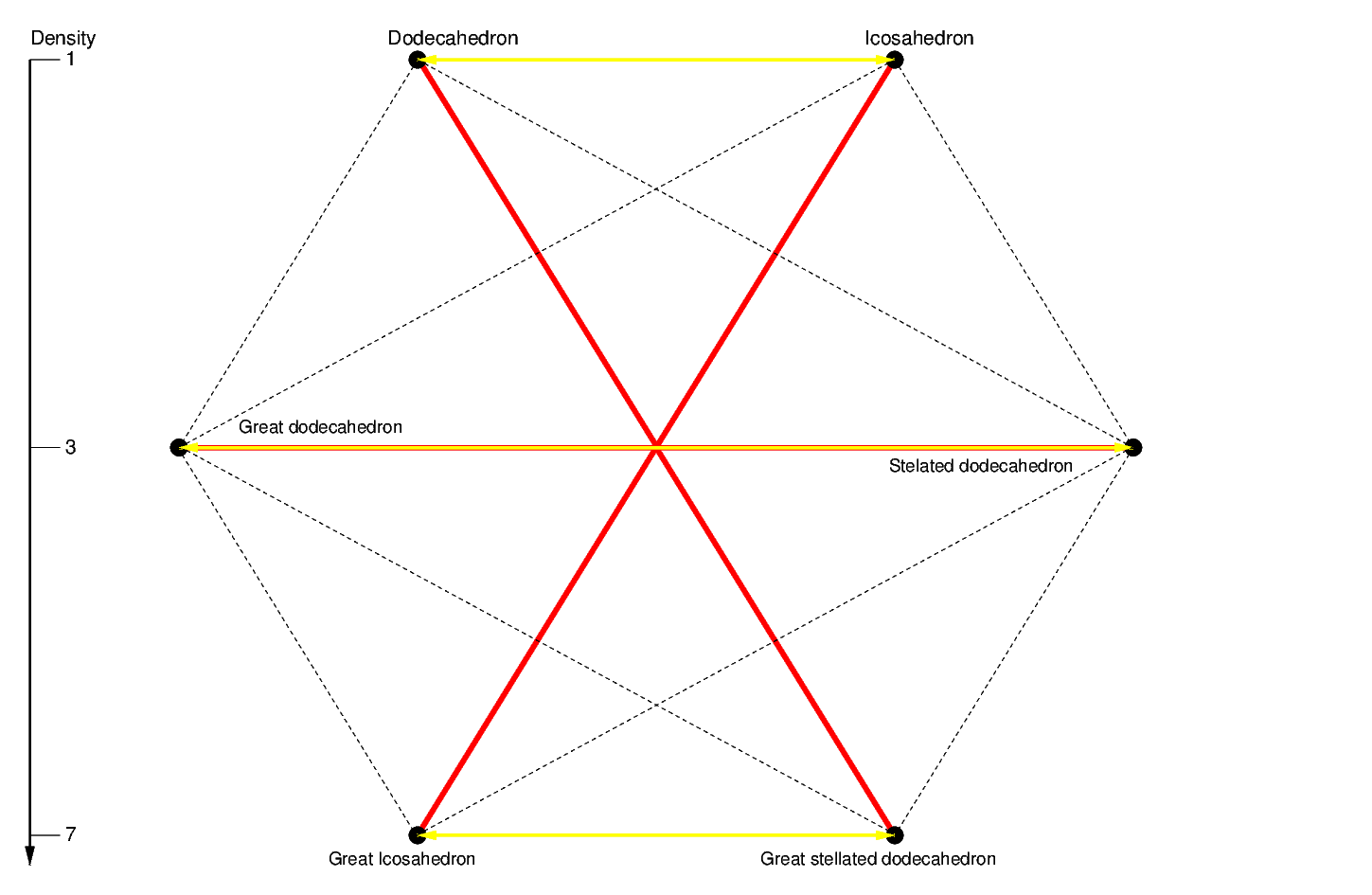
Diagram Ia
The vertical scale indicates the density. The lines denote the
two most important geometric relations between polyhedra, both of which are reciprocal
(e.g., if A is the dual of B, then B is the dual of A), they are therefore indicated by reflections:
- Duality. The operation is represented by the yellow reflections across the central
vertical line. Their horizontal direction means that this operation preserves the
density.
- Isomorphism. This operation is represented by the red reflections through the centre.
As pointed out by Coxeter, this operation changes Pentagons into Pentagrams and
Pentagrams into Pentagons, whether they are faces or vertex figures. If the polyhedron has
Pentagonal and Pentagrammic elements then both must change, otherwise the operation is not
reciprocal. Two isomorphic polyhedra are topologically identical: they have the
same number of faces, edges and vertices which have, for symmetry reasons, the same
arrangements. The faces have the same number of sides, and the vertices have the same
number of faces and edges converging into them, etc. (i.e., their configuration matrices
are identical).
As an example of isomorphism, the Icosahedron and Great icosahedron are isomorphic, with
20 Triangular faces and 12 vertices, which have the same arrangement. They have isomorphic
vertex figures (Pentagons and Pentagrams), which indicate that five faces meet at each
vertex. These vertex figures are highlighted by their edges in edge ``sections". Using
these Pentagonal edge sections of the Icosahedron to make Great dodecahedra is isomorphic
to using the Pentagrammic edge sections of the Great icosahedron to make Stellated
dodecahedra.
If two polyhedra are isomorphic, so are necessarily their duals. This implies that the
Dodecahedron is isomorphic to the Great stellated dodecahedron. We have thus established
geometrically all the isomorphisms in Diagram Ia.
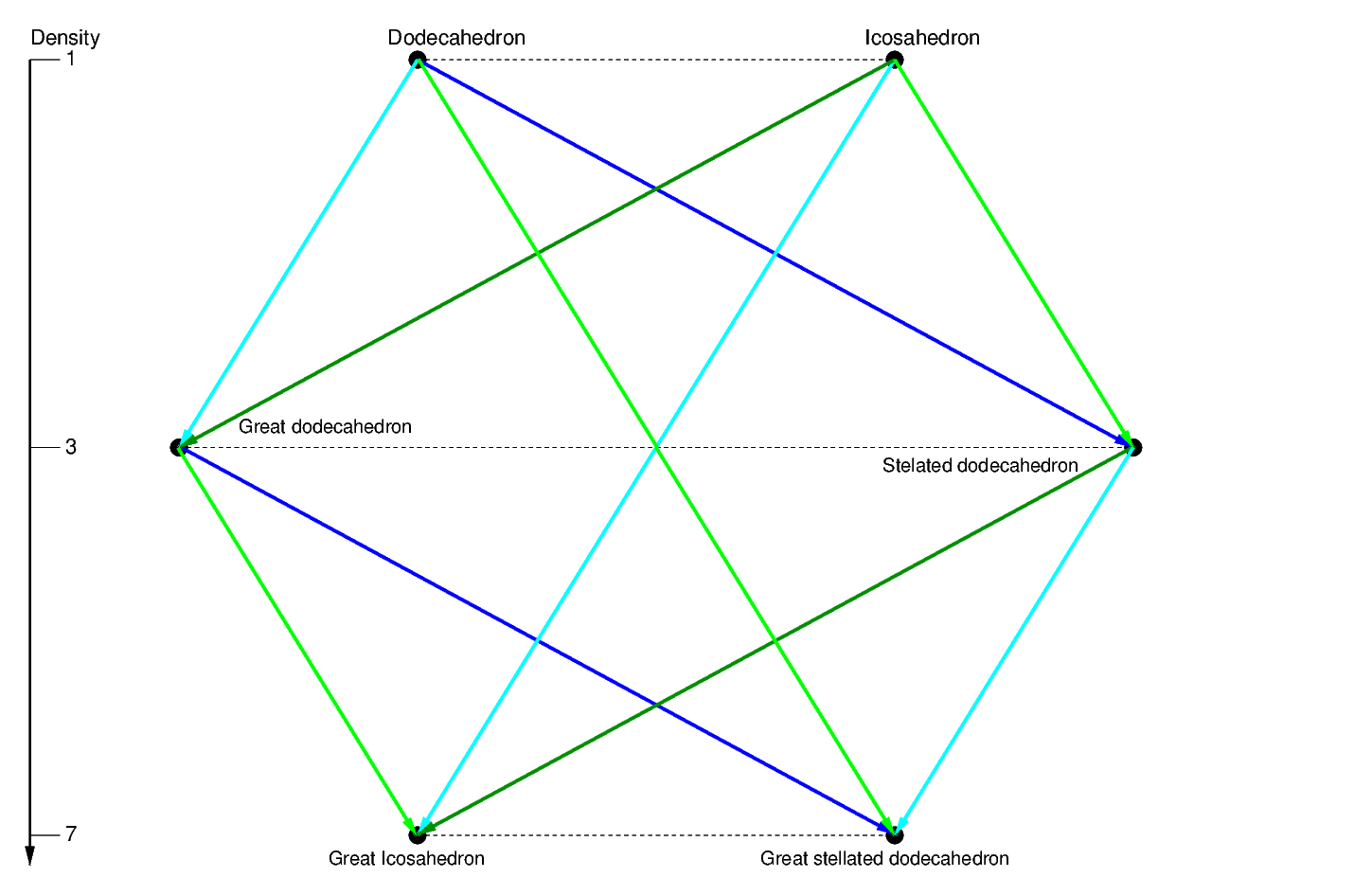
Diagram Ib
Using the information on the sections, we can show, in green in Diagram Ib, the two
faceting operations that can occur among regular polyhedra. These can be represented by
parallel translations (represented
as arrows) within the same Hexagonal arrangement, the reason for this is the central
symmetry of the isomorphism operation:
- Edge faceting. This operation, represented by the dark green arrows,
represents the cases discussed above where the edge
arrangement was preserved by making a polyhedron using the sections of another as
faces. Because the edges are preserved, this operation necessarily facets the vertex
figures, from Pentagons to Pentagrams (Fig. 2.6b). In the lower part of the diagram, this
operation goes in the opposite direction from the construction of the Stellated
dodecahedron from the Great icosahedron; this means that the Great icosahedron is a
faceting of the Stellated dodecahedron.
- Vertex faceting. This operation, represented by the light green arrows,
replaces a vertex figure by a smaller dual: The vertex figure of the Icosahedron is a
Pentagon with side 1 (the chord of the inner angle of the Triangular faces), while the
vertex figure of the Stellated dodecahedron is also a Pentagon with side 1/ φ (the
chord of the inner angle of the Pentagrammic faces). Here we see that the Great stellated
dodecahedron is the only faceting of the Dodecahedron, having also Triangular vertex
figures.
The four polyhedra in the rectangular green circuit are facetings of the Icosahedron,
sharing its vertex arrangement (see Fig. 4.6c).
As we've seen, for two dual polyhedra A and B, a stellation of A (sA) is the dual of a
faceting of B (fB). We can therefore say that the stellation operation from A to sA is the
dual of the faceting operation from B to fB. Being the duals of the faceting operations,
these operations are, as shown in this diagram in blue, a mirror image of the faceting
operations; for this reason they are also represented by sets of parallel translations.
These stellation operations give the regular star polyhedra their names.
- Edge stellation. This operation is represented as the dark blue arrows.
Since the dual operation preserves the edge arrangements but changes Pentagonal vertex
figures into Pentagrammic ones, this operation preserves the perpendicular edge directions
but extends them by stellating Pentagonal faces into Pentagrammic faces (Fig. 2.6a).
- Greatening. This operation is represented by light blue arrows. Since the dual
operation replaces the vertex figure by a smaller dual, this operation replaces a face
with a larger dual in the same plane (see Fig. 4.6a).
The four polyhedra in the rectangular blue circuit are stellations of the Dodecahedron,
sharing its facial planes (see Fig. 4.6b).
***
We will now summarise the properties of the regular polyhedra. In this summary, we will
also show that there are no additional regular polyhedra, despite the fact that that the
Icosahedron has many more stellations and the Dodecahedron many more facetings. We will do
this with the help of Table 2, where we list the possible faces and vertex figures.
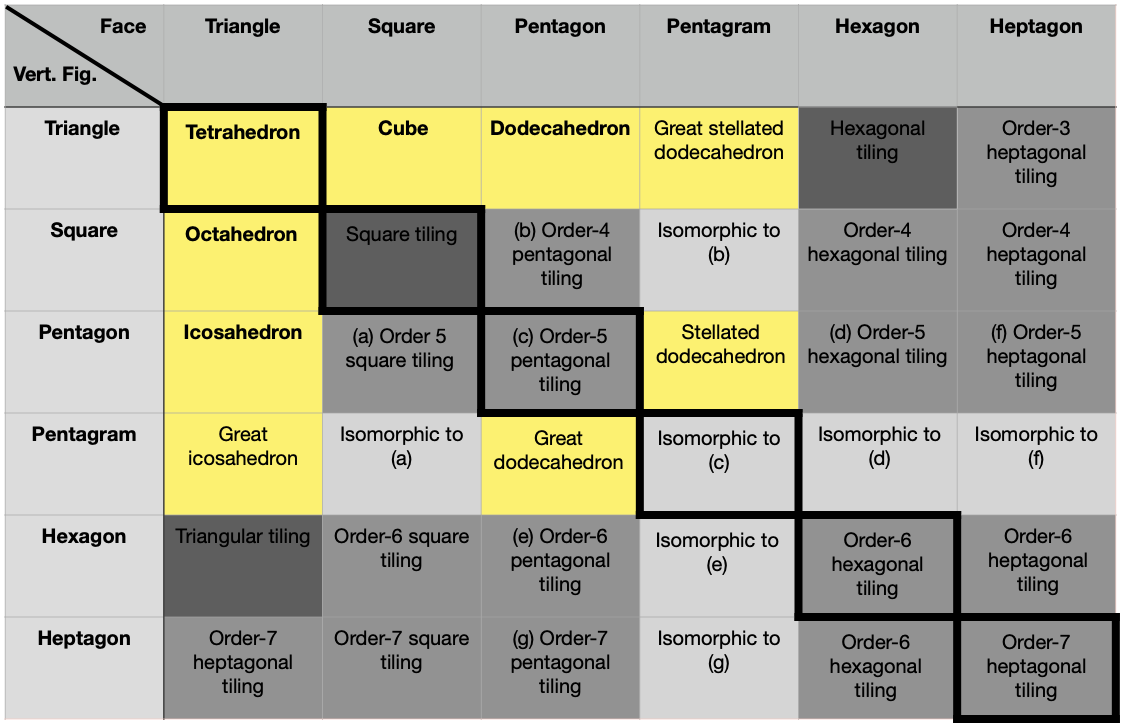
Table 2: Regular polyhedra have, by definition, regular faces and vertex
figures. Thus, if we list all possible faces in columns and all possible vertex figures in
rows we can enumerate all regular polyhedra (yellow) and regular tilings of the Euclidean
(dark gray) and hyperbolic (gray) planes. The convex regular polyhedra have their names in
boldface. The objects along the diagonal have identical faces and vertex figures, they are
therefore self-dual. Flipping the position of the table around this diagonal, we find dual
polyhedra: for instance, the Great stellated dodecahedron is the dual of the Great
icosahedron. The objects in light gray are not tilings, they are degenerate polyhedra with
an infinite number of elements, the reason for this is that they are isomorphic to the
tilings of the hyperbolic plane indicated with the same letters.
That the Platonic solids are the only regular convex polyhedra can be proved very easily
by noting that at least n = 3 faces must meet at each vertex, and that n times the inner angles at those vertices (β)
must be less than 360 degrees.
- Thus, for Triangular faces, the possibilities are the Tetrahedron, Octahedron and
Icosahedron. When 6 Triangles meet and a vertex, 6 × β = 360 degrees, and we
have the Triangular
tiling of the Euclidean plane. For seven
Triangles meeting at a vertex, we have the Order-7 triangular tiling, one of the
infinitely many regular tilings
of the hyperbolic plane.
- If three Squares meet at a vertex, we have the Cube, if four Squares meet at a vertex,
4 × β = 360 degrees, thus obtaining the Square tiling of the Euclidean
space. Beyond this only hyperbolic tilings with Squares.
- If three Pentagons meet at each vertex, we have the Dodecahedron, if four or more meet
at a vertex, we have again hyperbolic tilings.
- For Hexagons, no polyhedra are possible: if three meet at a vertex, we already have 3
× β = 360 degrees, thus obtaining the Hexagonal tiling of the
Euclidean space. Beyond this only hyperbolic tilings exist.
In this process, we see that the closest analogues of polyhedral surfaces are tilings of
2-Dimensional surfaces, Euclidean and hyperbolic. There is a close correspondence between
polyhedral surfaces and the finite tilings of a 2-D spherical surface, the spherical polyhedra, but
this correspondence is not one-to-one because some types of regular spherical polyhedra
have no corresponding regular polyhedra, like the regular beach ball.
That there are no additional regular star polyhedra can be proven in two stages. The first
is the argument from symmetry: as discussed above, any regular polyhedron must have all
its elements associated with axes of k-fold dihedral symmetry, with the edges being
associated with 2-fold symmetry. All the possibilities for such symmetries were already
listed above: if additional symmetries existed, we would have additional Platonic solids.
With this argument, we can eliminate k > 5, i.e., no faces or vertex figures with more
than 5 sides. This leaves a total of 16 possibilities (the top left 4 × 4 subset), 4
of which are, as we've already seen, infinite tilings.
The second stage is based on the idea of isomorphism. The three objects indicated with
letters in parentheses are not tilings, however they are isomorphic with the hyperbolic
tilings indicated with the same letters. The resulting infinite number of elements implies
that, although we might attempt to build polyhedra with these types of faces and vertex
figures, they never close on themselves.
The remaining 9 objects were already mentioned above. There are therefore no additional
regular polyhedra, and therefore no star polyhedra with symmetries other than Icosahedral.
Rectifications:
The regular star polyhedra shown above represent only a small fraction of the uniform star polyhedra. We will now look at a few
additional uniform star polyhedra that are of special relevance for what follows. The
first are the rectifications of the four regular star polyhedra. From this, we obtain two
quasi-regular star polyhedra (which are uniform) and their duals
(which are isohedral); these are shown in
Fig. 3.6a.
For the regular star polyhedra, the edge midpoints are located in 15 axes of Icosahedral
2-fold symmetry, so they have the same arrangement as the vertices of the
Icosidodecahedron. The same happens therefore for the vertices of their rectifications.
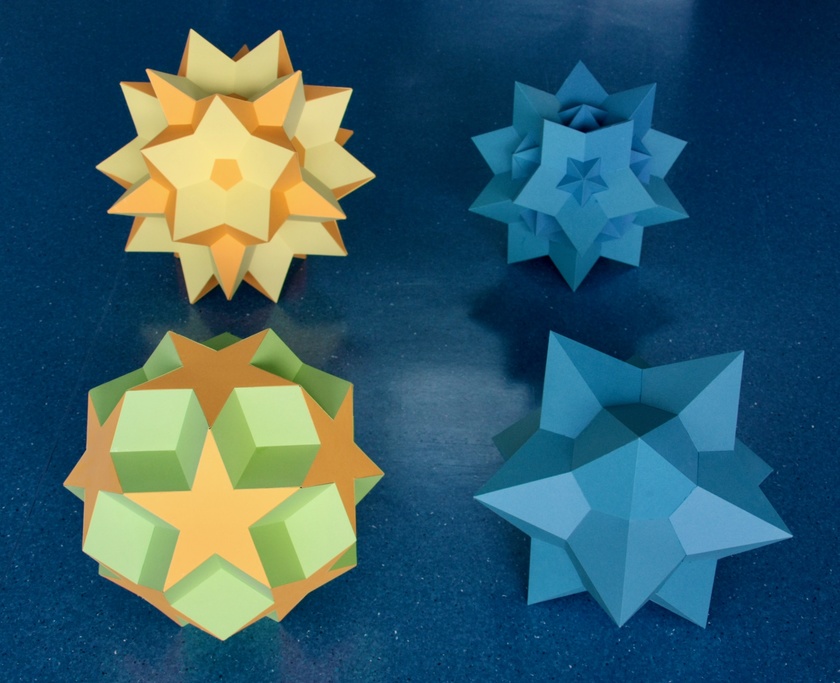
Fig. 3.6a: Two quasi-regular star polyhedra and their duals.
Bottom left: the Dodecadodecahedron. Bottom
right:
Medial rhombic triacontahedron.
Top left: the Great Icosidodecahedron.
Top right: the
Great rhombic triacontahedron.
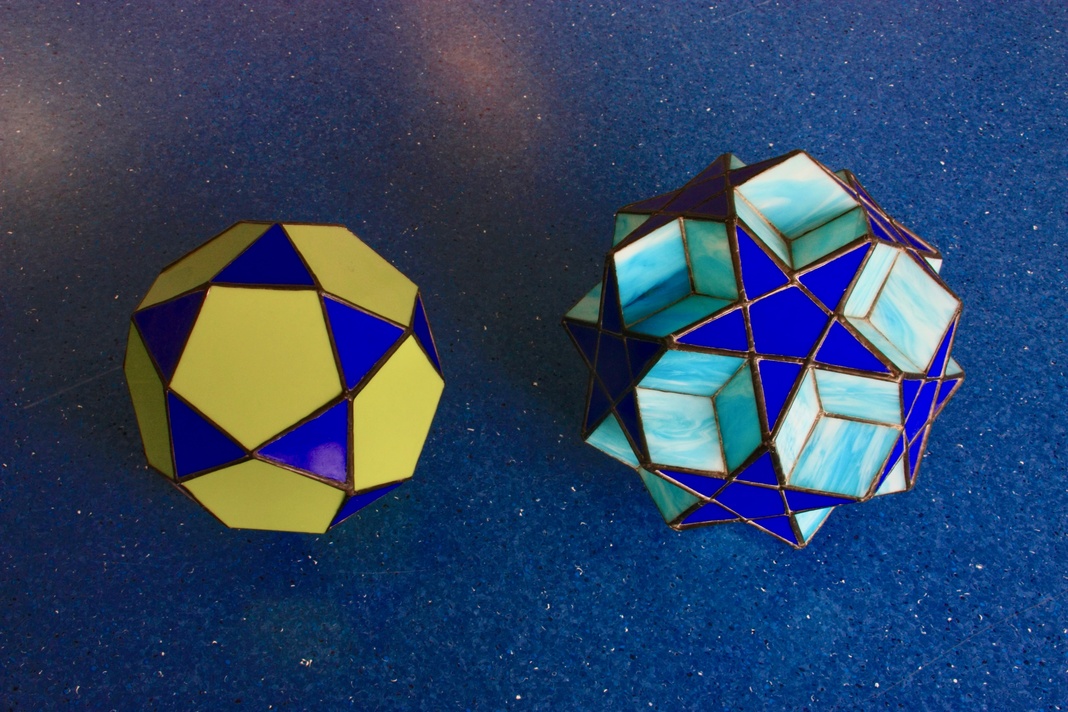
Fig. 3.6b: Here are stained glass models of two quasi-regular polyhedra: the
Icosidodecahedron (left) and the Dodecadodecahedron (right). Here we can compare the
identical vertex arrangements.
Made by Naomi Janches.
The two rectifications and their duals share all the properties of the convex
rectifications and their duals above:
- Faces / Vertices: The Dodecadodecahedron is the
rectification of the Great dodecahedron and the Stellated dodecahedron. Being a
rectification, it has the faces of both forms it rectifies: 12 Pentagonal and 12
Pentagrammic faces. Its dual is the
Medial rhombic triacontahedron. It has has 12 vertices with Pentagonal figures and 12
vertices with Pentagrammic figures. No elements of these two polyhedra are aligned with
the axes of 3-fold symmetry.
The Great
icosidodecahedron is the rectification of the Great icosahedron and the Great
stellated dodecahedron. It has 20 Triangular and 12 Pentagrammic faces. Its dual is the
Great rhombic triacontahedron; it has 20 vertices with Triangular figures and 12
vertices with Pentagrammic figures.
- Vertices / Faces: In the rectifications, four edges and faces (two of each kind
and alternating) meet at each of the 30 vertices, which means that the vertices have
Rectangular figures, in these cases Long yellow and Golden rectangles (Figs. 2.2e and
2.2d). This implies that their duals are isohedral, with 30 Rhombic faces which are the
duals of the Rectangular vertex figures of the dual polyhedra, in these cases Long yellow
and Golden rhombuses (Figs. 2.4c and 2.4b) respectively, also centrally symmetric. Since
the rectifications are facetings of the Icosidodecahedron (Fig. 4.12), their rhombic duals
are necessarily stellations of the dual of the Icosidodecahedron, the Rhombic
triacontahedron (see Figs. 4.11a and b). As the vertices of the rectifications, the faces
of their duals are always associated with the axes of icosahedral 2-fold symmetry.
- Edges: The rectifications are isotoxal, with each of the 60 identical edges
(which as we've seen above, must be twice the number of edges of the regular polyhedra
they rectify) separating the two types of faces. This implies that their Rhombic duals are
also isotoxal, with the 60 identical edges linking the two types of vertices. For more on
the edges, see Fig. 4.12.
- As we have seen, the Great icosahedron is isomorphic to the Icosahedron. The same
happens to their rectifications, the Great icosidodecahedron and the Icosidodecahedron.
The same applies, then, to their duals, the Rhombic triacontahedron and the Great rhombic
triacontahedron. In the Dodecadodecahedron, the two types of faces are isomorphic to each
other, this means that the same happens for the vertex figures of its dual, the Medial
rhombic triacontahedron.
The central symmetry of the Rectangular vertex figures implies (again) that these
rectifications have equatorial even-sided polygons. For the Dodecadodecahedron, this is a
set of ten Hexagons; which are perpendicular to the 10 axes of Icosahedral 3-fold
symmetry; for the Great icosidodecahedron, this is a set of six Decagrams, which like the
equatorial Decagons of the Icosidodecahedron are perpendicular to the 6 axes of
Icosahedral 5-fold symmetry. All add up to the total of 60 edges mentioned above. The
metric properties of these equatorial polygons (listed in Table 1) are, again, useful for
calculating the metric properties of these polyhedra. The equatorial Hexagons of the
Dodecadodecahedron imply that, like the Cuboctahedron above, it is radially equilateral!
The equatorial Decagrams of the Great icosidodecahedron imply that R0 = 1/
φ ℓ. These equatorial polygons imply that their duals have equatorial rings of
Rhombic faces, which is inevitable given the central symmetry of those faces.
Partially regular polyhedra:
Apart from the regular polyhedra, there are only
four uniform polyhedra that are stellations or facetings of the Platonic solids. One of
the aforementioned hemipolyhedra, the Tetrahemihexahedron, is a
faceting of the Octahedron. The other three are the ditrigonal polyhedra. Like
the Great stellated dodecahedron, they are facetings of the Dodecahedron; therefore their
duals, the triambic icosahedra, are isohedral and are stellations of the Icosahedron.
In Fig. 3.7 we show models of these polyhedra:
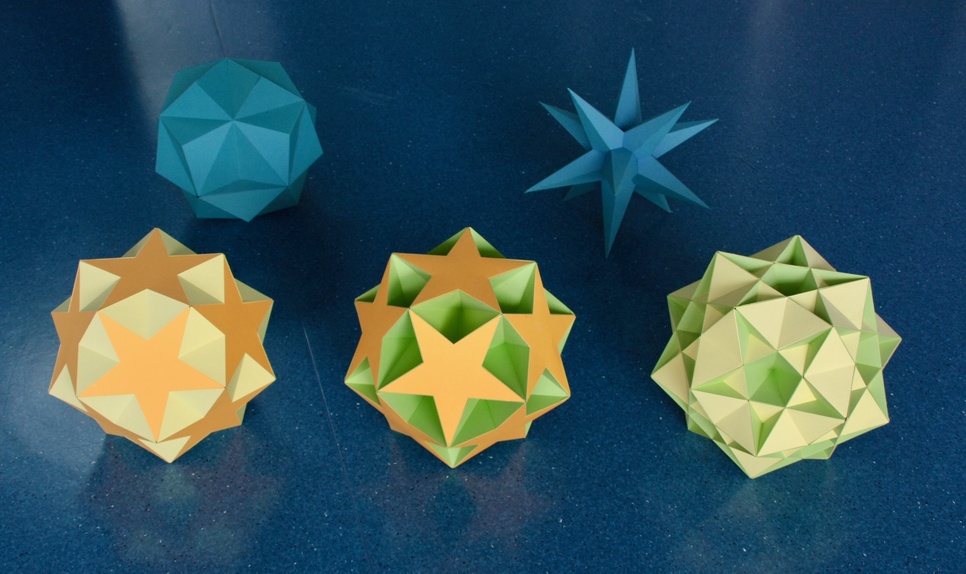
Fig. 3.7: Three of the four partially regular polyhedra are known as the ditrigonal
polyhedra. They are here shown with their duals, the triambic icosahedra:
Bottom left: The Small ditrigonal
icosidodecahedron; on top left is its dual, the Small triambic
icosahedron.
Bottom middle: Ditrigonal
dodecadodecahedron; on top right is its dual, the Medial triambic icosahedron.
Bottom right: The Great ditrigonal
icosidodecahedron; on top right is its dual, the Great triambic
icosahedron. This is represented by the same model as the Medial triambic icosahedron
as they only differ in their internal structure.
Most of the properties of the ditrigonal polyhedra are analogous to those of the
quasi-regular polyhedra above (this is the reason why they are generally classified as
such), with a fundamental difference: white the vertices of the latter are in the axes of
Icosahedral 2-fold symmetry, the vertices of the ditrigonal polyhedra are, like those of
the Dodecahedron they facet, in the axes of Icosahedral 3-fold symmetry; no elements are
associated with the axes of 2-fold symmetry.
- Faces / Vertices: They also have two types of regular faces; in fact each
ditrigonal polyhedron has the types and numbers of faces as one of the rectifications with
Icosahedral symmetry (notice the similarity of the names):
- The Small ditrigonal icosidodecahedron has 12 Pentagrammic faces and 20 Triangular
faces like the Great icosidodecahedron;
- The Ditrigonal dodecadodecahedron has 12 Pentagrammic and 12 Pentagonal faces like the
Dodecadodecahedron;
- The Great ditrigonal icosidodecahedron has 12 Pentagonal faces and 20 Triangular
faces, like the Icosidodecahedron.
Thus, their duals, the triambic icosahedra, have two types of vertices - in the same
numbers and with the same vertex figures as the vertices of the three Rhombic
triacontahedra.
- Vertices / Faces: The ditrigonal polyhedra are isogonal; 6 edges and 6 faces
(three of each kind and alternating) converge on each vertex. Therefore their vertex
figures are isogonal hexagons with 3-fold symmetry: the ditrigonal hexagons in Fig. 2.3e,
their 1/φ, 1 and φ edges correspond to the chords of the inner angles of the
Pentagram, Triangle and Pentagon. Therefore the faces of the triambic icosahedra are the
duals of the ditrigonal hexagons, the isotoxal hexagons known as triambuses, hence their name.
- Edges: All ditrigonal polyhedra are isotoxal, with all edges separating the two
kinds of faces. Furthermore, they all share share the same edge arrangement, which
consists of the edges of the 20 Triangular vertex figures of the Dodecahedron; the total
(60) is the same as for the rectifications with Icosahedral symmetry. Therefore, all
triambic icosahedra are also isotoxal, with their 60 edges connecting the two types of
vertices. The edge directions, which are perpendicular to those of the ditrigonal
polyhedra, are all identical, however, the edges have different lengths; they can all be
derived from the first stellation of the Icosahedron (the Small triambic icosahedron) by a
special type of asymmetric edge stellation.
- The Small ditrigonal icosidodecahedron is isomorphic to the Great ditrigonal
icosidodecahedron; this implies that their duals - the Small and Great triambic icosahedra
- are also isomorphic to each other. In the Ditrigonal dodecadodecahedron, the two types
of faces are isomorphic to each other, this implies that the vertex figures of its dual,
the the Medial triambic icosahedron, are also isomorphic to each other. This pattern is
very similar to that seen among the rectifications with Icosahedral symmetry.
The lack of central symmetry of vertex figures of these polyhedra, the ditrigonal hexagons
(discussed here) implies that, unlike
the quasi-regular polyhedra, they have no equatorial polygons. Therefore, in their duals
(the triambic icosahedra), the 6-sided triambic faces are not centrally symmetric either,
and therefore there are no equatorial rings of faces.
Regular and partially regular polyhedron compounds
As we've seen for polygons, when stellating
or faceting a convex Polygon, we often obtain a compound Polygon: a Polygram. Likewise,
stellating or faceting a polyhedron often results in polyhedral compounds like those in
Figs. 3.3a, b and c, which result from stellating the Octahedron, Cuboctahedron and
Icosidodecahedron.
A compound is fully regular
if it is a stellation and faceting of a Platonic solid. The reason for this is that, as
for regular polyhedra, all their elements must be associated with axis of some dihedral
k-fold symmetry. For the same reason, the constituent polyhedra must also be regular; but
constructible with a ``smaller'' symmetry contained within the symmetry of the compound.
The partially regular compounds are either stellations or facetings of a
Platonic solid. In Fig. 3.8a we display the fully regular compounds.
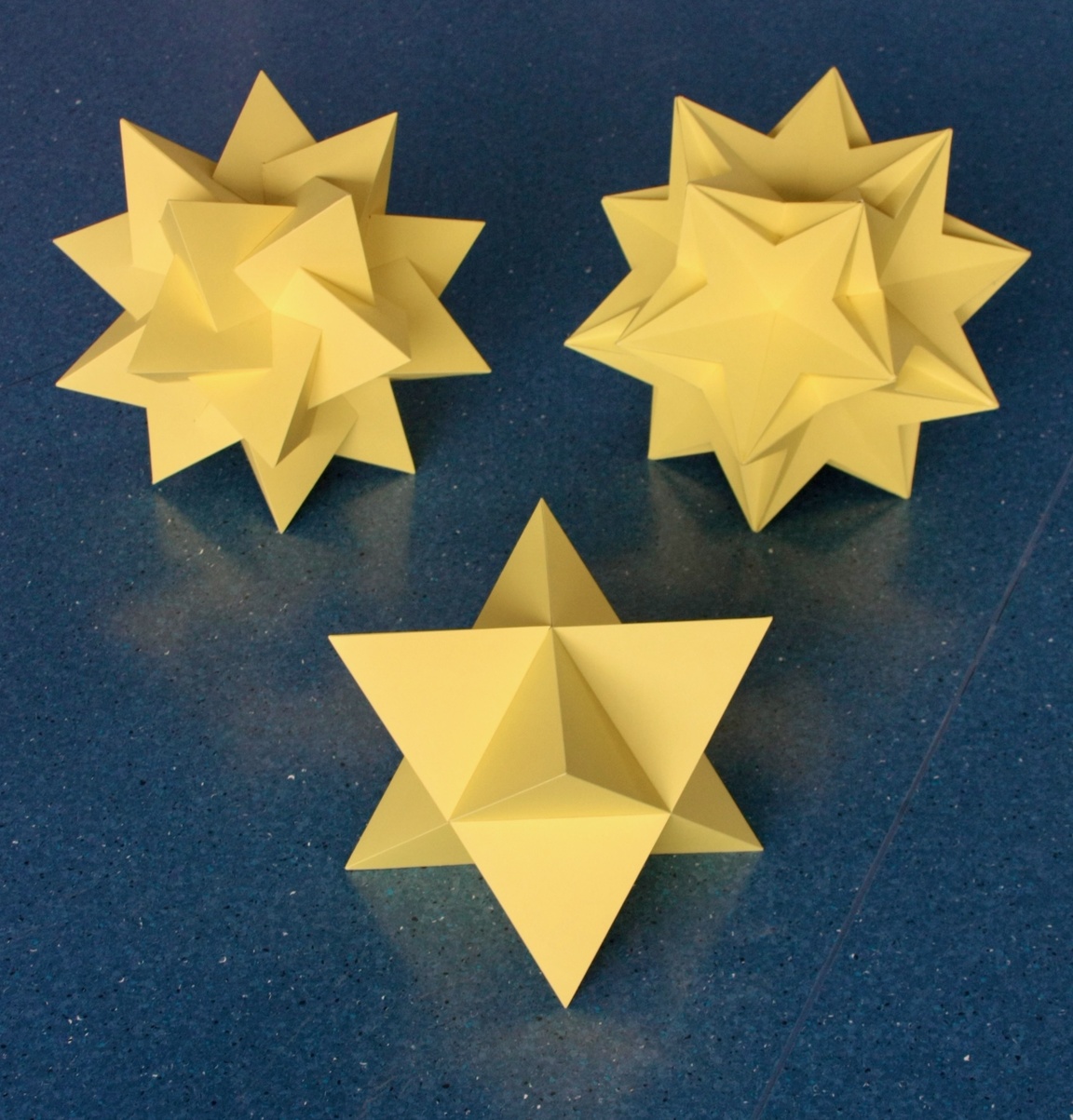
Fig. 3.8a: The fully regular polyhedron compounds.
In the foreground: the Compound of two tetrahedra.
In the background, left: the Compound of five tetrahedra. On the right is the Compound of
ten tetrahedra.
The Stella Octangula, which also appears in Fig. 3.3a, is the only stellation of the
Octahedron. The Triangular faces of the Octahedron are expanded into dual Triangles that
have twice the edge length (see Figs. 4.5a, b). In Diagram Ib, this type of stellation is
called a "greatening". The two Tetrahedra in the compound are dual to each other. Since
the compound is self-dual, it is also a faceting of the Cube, the only one. Thus, it is
fully regular. This compound has Octahedral symmetry.
The Compound of five
tetrahedra does not have the full Icosahedral symmetry: it has the same symmetry axes
of the Icosahedral symmetry, but only rotational symmetries around those, no reflection
symmetries. Because a reflection of the compound results in a chiral (i.e.,
mirror-symmetric) version, its symmetry is known as "Chiral icosahedric symmetry". This
highlights the fact that, generally, stellation and faceting operations do not necessarily
preserve the full symmetry of the polyhedra being faceted and stellated.
Interestingly, and very rarely, these chiral forms are dual to each other. Thus, the fact
that both are facetings of the Dodecahedron immediately implies that both are stellations
of the Icosahedron. The 20 vertices have Triangular vertex figures like the the
Dodecahedron and Great stellated dodecahedron, the 20 faces are Triangular as those of the
Icosahedron and Great icosahedron. All of these are associated with the 10 axes of 3-fold
rotational symmetry. No regular compounds of polyhedra have elements associated with the
axes of Icosahedral 5-fold symmetry.
The fact that the compound is regular means that it looks the same from the 2 vertices
linked by any edge and the 2 faces that the edge separates. This means that the compound
must look the same after a rotation of 180 degrees around the edge midpoints, as in all
regular polyhedra. This means that the midpoints of the 30 = 5 × 6 edges must lie on
the 15 axes of 2-fold Icosahedral symmetry, thus having the arrangement of the vertices of
the Icosidodecahedron.
The Compound of ten
tetrahedra can be seen as the combination of the two dual chiral Compounds of five
tetrahedra, which means it is self-dual and has full Icosahedral symmetry. Alternatively,
it can be seen as a Compound of five Stellae octangulae, each made of Tetrahedra from the
two dual Compounds of five tetrahedra. Since the 40 vertices of the 10 Tetrahedra coincide
in pairs with the 20 vertices of a Dodecahedron, its self-duality implies that the 40
Triangular faces of the ten Tetrahedra fall in pairs on the 20 facial planes of a
Icosahedron. Only these pairs of faces and of vertex figures have full 3-fold symmetry,
not the individual faces and vertex figures, which have only 3-fold rotational symmetry,
as in the Compound of five tetrahedra. This compound has the 60 edges from the two chiral
compounds. As in the compounds of duals regular polyhedra (Figs. 3.3a, b, c), especially
the five Stellae Octangulae that constitute it, each edge from one chiral compound
intersects an edge of the other compound in their midpoint at 90 degrees.
***
As we said above, rectifying the Tetrahedron results in another regular solid, the
Octahedron. Applying the process to the Compound of two Tetrahedra, we obtain two
superposed Octahedra. An inspection of the model shows why this is the case: each new face
produced by the rectification of a Tetrahedron is co-planar with a face of its dual
Tetrahedron (see Figs. 4.5a and b).
Applying the rectification to the other Tetrahedral compounds above, we obtain the results
below.
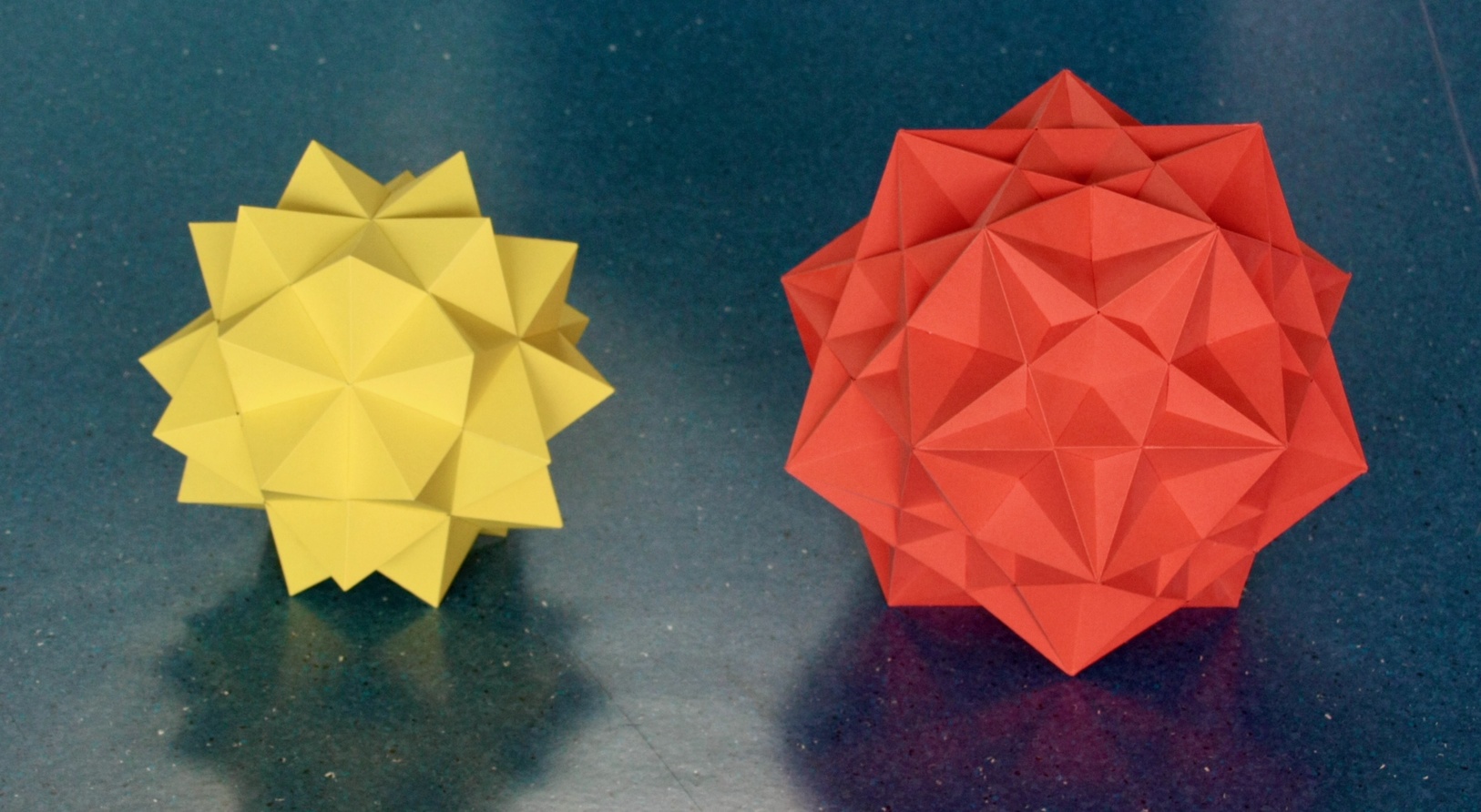
Fig. 3.8b: The partially regular polyhedron compounds.
On the left is the Compound of five octahedra. On the right is its dual, the Compound of
five cubes.
In the case of either Compound of five tetrahedra, the rectification results in a Compound of
five octahedra. Rectifying the Compound of ten tetrahedra results in two exactly
superposed Compounds of five octahedra; the reason is that the Compound of ten tetrahedra
can be seen as a Compound of five Stellae octangulae, and as mentioned above, rectifying
each of those results in two superposed Octahedra. The dual of the Compound of five
octahedra is the Compound of five cubes.
- Faces / Vertices: As we've seen in the first definition of rectification above,
the rectification of two dual forms necessarily has the faces of both of them, but in dual
orientations. Therefore, the Compound of five octahedra, being a rectification of both
Compounds of five tetrahedra, has (like their combination, the Compound of ten tetrahedra)
40 Triangular faces falling in pairs on the 20 facial planes of the Icosahedron.
This fact means that it is a stellation of the Icosahedron, and therefore partially
regular. Thus its dual, the Compound of five cubes, is a faceting of the Dodecahedron and
thus also partially regular: like the Compound of ten tetrahedra, its 40 vertices coincide
in pairs with the vertices of the Dodecahedron. As in the Compound of ten tetrahedra, only
the pairs of Triangular faces and the pairs of Triangular vertex figures have full 3-fold
symmetry, not the individual Triangular faces and vertex figures, which have only 3-fold
rotational symmetry.
Given the vertex coincidences, the Compound of ten tetrahedra must facet the Compound of
five cubes, with each of its five Stellae Octangulae faceting a Cube. Thus, by duality,
the Compound of ten tetrahedra is also a stellation of the Compound of five octahedra,
with each Octahedron stellating into a Stella Octangula.
- Vertices / Faces: As we've seen above, in a rectification of regular polyhedra
the vertices of the rectification are the edge midpoints of the regular polyhedra being
rectified. As discussed above, in the Compounds of five and ten tetrahedra, these edge
midpoints are arranged as the 30 vertices of the Icosidodecahedron, this is therefore the
arrangement of vertices of the Compound of five octahedra (see Fig. 4.12). Thus its dual,
the Compound of five cubes, has 30 faces on the same planes as the 30 faces of the Rhombic
triacontahedron (see Figs. 4.11a and b). The vertices of the former and faces of the
latter are in the axes of Icosahedral 2-fold symmetry.
- Edges: As in previous rectifications, the rectification of the Compound of five
tetrahedra doubled the number of edges; this means that, like all rectifications with
Icosahedral symmetry and their duals - and, again, the Compound of ten tetrahedra - the
Compound of five octahedra has 60 identical edges. The same is therefore true for all
duals, including the Compound of five cubes.
Additionally, the latter compound shares the edge arrangement of three partially regular
60-edge facetings of the Dodecahedron, the ditrigonal polyhedra in Fig. 3.7. This means,
by duality, that the 60 edges of the Compound of five octahedra can be obtained by
extending the edges of the first stellation of the Icosahedron, the Small triambic
icosahedron, as for the other two triambic icosahedra in Fig. 3.7.
The Compound of five Octahedra has their equatorial Squares as an equatorial polygon.
Since there are three such Squares for each Octahedron, the full compound has a total of
15 equatorial Squares, which account for the 60 edges. They are perpendicular to the 15
axes of Icosahedral 2-fold symmetry. As an aside, here is a list of the rectifications of
regular polyhedra and compounds, their equatorial polygons and the axes of symmetry they
are perpendicular to that were discussed in this page:
| Eq. Polygons | Polyhedron | Axis of symmetry | Figure |
| 3 Squares | Octahedron | 2-fold Tetrahedral, 4-fold Octahedral | 3.1 |
| 4 Hexagons | Cuboctahedron | 3-fold Tetrahedral, Octahedral | 3.4 |
| 6 Decagons | Icosidodecahedron | 5-fold Icosahedral | 3.4 |
| 10 Hexagons | Dodecadodecahedron | 3-fold Icosahedral | 3.6a |
| 6 Decagrams | Great icosidodecahedron | 5-fold Icosahedral | 3.6a |
| 15 Squares | Compound of five octahedra | 2-fold Icosahedral | 3.8b |
***
We now summarise the properties of the regular compounds: Being facetings and
stellations of the Platonic solids, the compounds in Fig. 3.8a are fully regular, like the
regular star polyhedra in Fig. 3.5a. Being rectifications of the compounds in Fig. 3.8a or
their duals, the compounds in Fig. 3.8b share some characteristics with the rectified
polyhedra and their duals in Fig. 3.6a: they are facetings of the Icosidodecahedron or
stellations of the Rhombic Triacontahedron. However, in addition, they are also
stellations or facetings of the Platonic solids, i.e., they are partially regular
like the ditrigonal polyhedra and triambic icosahedra in Fig. 3.7, with which they share
edge directions. However, since these compounds are isogonal, isotoxal, isohedral and
consist of Platonic solids, they are generally considered regular as well.
There are many more non-regular stellations of the Icosahedron: H. S. M. Coxeter, P. Du
Val, H. T. Flather and J. F. Petrie (1938) list 59 stellations.
However, only 22 of these stellations are either polyhedra (like the Great icosahedron and
the triambic icosahedra) or polyhedral compounds (like the regular Compounds of 5
Tetrahedra, 10 Tetrahedra and 5 Octahedra). Only these 22 have well-defined duals that are
facetings of the Dodecahedron (see Bridge, 1974, see also the models),
such as the Great stellated dodecahedron, the ditrigonal polyhedra and three of the
regular compounds (of 5 Tetrahedra, 10 Tetrahedra and 5 Cubes). In contrast, apart from
the regular star polyhedra, there are no additional stellations of the Dodecahedron /
facetings of the Icosahedron!
We note that many more symmetric polyhedron compounds can be built. One especially
interesting class, which includes the objects we just discussed, is the uniform polyhedron
compounds.
Paulo's polytope site / Next: polyhedra with the Zometool.














